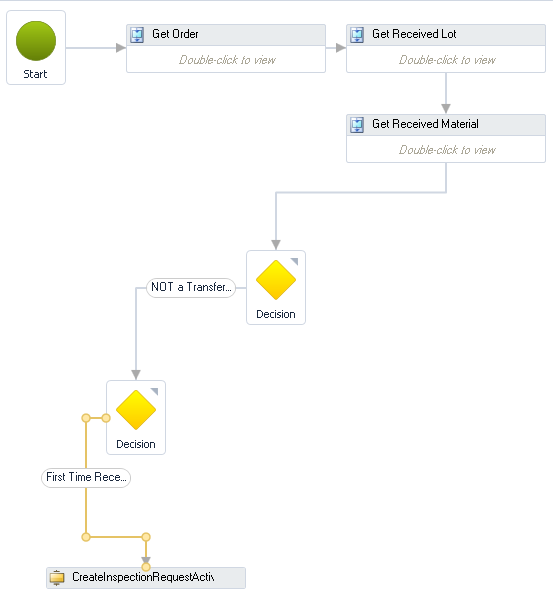Workflows
Sections
Overview
Workflows are used to customize Footprint's behavior and functionality, automating all sorts of processes based on sets of information in the system.
Workflows
At its core, a Workflow takes input information, runs it through a series of statements, and returns an output according to the desired behavior. They can be used to trigger new events, change the way events occur, or to stop events from happening in the first place. Footprint's Workflows offer near endless customizability to augment or supplant the system's out of the box functionality.
Graphically, Workflows are easiest understood in the form of a flowchart. Workflows typically take bits of information and apply logical decision-making to come to some sort of conclusion about the information, often taking the form of output information or events.
Workflows are run many times during normal operation of Footprint. When a Workflow is run depends on the type of Workflow. The Entity Status Change Workflow, for example, kicks off every time any Status is changed in Footprint.
Footprint, by default, has generic Workflows in place that are employed each time the proper circumstances occur. Customized Workflows take the place of these default Workflows, running through whatever additional conditions have been outlined within.
Because Workflows are essentially lines of code, they can be exported as XML documents.
Data Primitives
Data Primitives are the pieces of information that can be used by a Workflow's decision-making process.
Each Entity in Footprint, be it an Order, an Owner, a Serial Number, a FootPrintEvent, whatever, carries with it a set of data. This data is the information filled into fields in Footprint, along with system-driven information such as Statuses and IDs.
Activities
See: Workflow Activities
Activities are operations that are performed within a Workflow. If Entity Data could be thought of as the nouns of a Workflow, Activities would be the verb.
Workflow Activities range from simple if-then statements and flowchart decisions to more complex, Footprint-specific operations.
Examples of Workflow Uses
Here are just a few ways Workflows are being used by Datex customers:
- Setting items on Hold (Inactive) Statuses when Received and creating Inspection Tasks for them
- Multi-step Putaways for blast freezing
- Customized Recurring Storage Billing to correspond with the fluctuating value of goods (daily gold prices, for instance)
- Automatically creating Move Tasks when inventory is moved to the wrong Location
- Setting items on Hold (Inactive) Status when failing Inspections
- Automatic Order creation for Blind Receipts
Note
Though the Workflows are fairly simple to understand, following a flowchart progression from beginning to end, they make use of light coding that can quickly become overwhelming without any programming experience. Because of this, the customization of Workflows is not recommended for the typical Footprint user. If you are interested in using customized Workflows, contact Datex Corporation before making any changes to help determine the best course of action.
| Last Updated: |
| 06/06/2025 |


